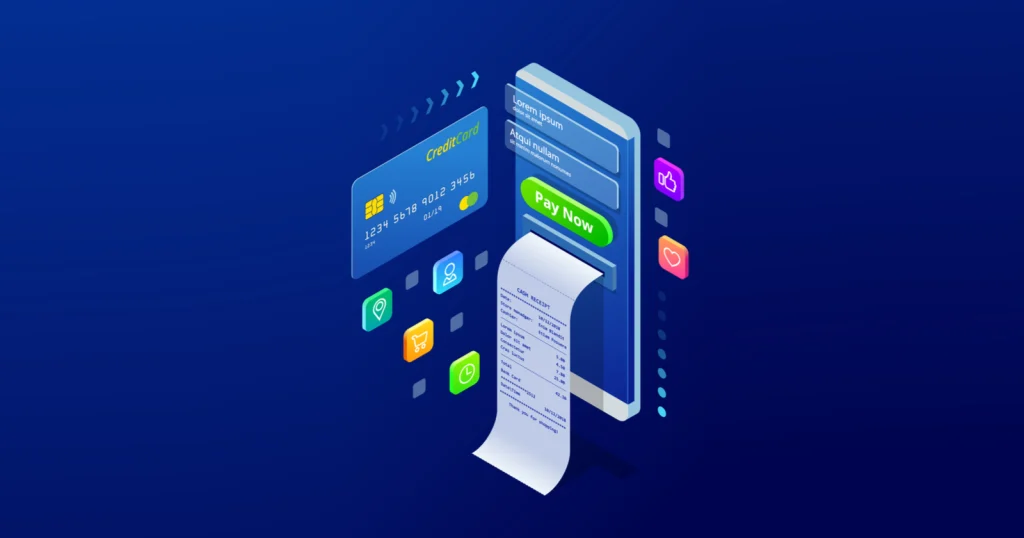Securing Your Transactions: Digital Payment Solutions
by
Shethana
Oct 07, 2024  11 MIN READ
11 MIN READ

In today’s fast-changing digital world, digital payments are a key part of financial services.
They change how we handle and think about money. Digital payment solutions include various tools and platforms that make secure digital transactions easy. They provide convenience, speed, and better security compared to traditional payment methods. This blog post will look into digital payments. We will discuss their growth, benefits, security features, and the future trends that will shape them.
Understanding Digital Payment Solutions
Digital payment solutions are when money moves electronically from one person to another without using cash. These transactions can happen on different platforms like mobile wallets, online payment systems, and contactless payment methods. Digital payments are very popular because they make it easy for users to send and receive cash, shop online, and pay bills from anywhere.
Besides being easy to use, digital payments are also safer than cash. They use security measures like encryption, tokenization, and biometric checks to keep your financial information safe during digital transactions. This helps lower the chances of fraud and protects against unauthorized access.
The Evolution of Digital Payments in the UAE
The UAE has seen big changes in digital payment methods lately. This shift is thanks to government support, new technology, and more people and businesses using electronic payments. The country has strong digital infrastructure and clear rules that help make a successful digital payment ecosystem.
The evolution began with credit and debit cards. Now, the UAE uses mobile wallets, contactless payments, and online payment systems. The Reserve Bank of India (RBI) has been an important player in encouraging digital payments with projects like the Unified Payments Interface (UPI) and by promoting mobile banking.
With more smartphones and internet access, the UAE is ready for even more growth in electronic payment methods. The government’s goal of creating a “Digital India” has sped up the move to digital payments. This change helps people and businesses make secure and easy financial transactions.
Key Components of Digital Payment Systems
At the center of every digital payment system, there is a network of parts that work together. This teamwork helps to make transactions smooth and safe.
First, financial institutions like banks and payment processors are important. They help move money between people. Digital wallets, offered by banks or other providers, act as places to store payment info and allow transactions.
Lastly, strong security steps are vital. These include encryption, tokenization, and multi-factor authentication. They keep sensitive financial details safe and ensure the payment system works well. Together, these parts help create a dependable and trustworthy digital payments world.
The Role of Digital Payments in Modern Finance
Digital payments are now a big part of modern finance. They have changed how we handle money and make transactions. These payment methods do more than just make things easier. They affect how people spend money, help businesses run better, and promote financial inclusion.
Using digital payments shows that the world is moving towards a cashless society. As more people learn to use technology, we can expect digital payments to be a bigger part of our everyday lives. This will change financial services around the world even more.
Impact on Consumer Behavior and Business Operations
The rise of digital transactions has greatly changed how people shop. More consumers are now doing their shopping online and using contactless payments. They prefer mobile banking because it is convenient, fast, and safe.
For businesses, using digital payments is key to staying competitive in today’s market. It helps them run their operations smoothly, lower transaction costs, and manage cash flow better. In addition, digital payment options mean that businesses can reach more customers and keep them happy.
But, with the rise of digital payments, there are some new problems to face. There is a greater risk of cybercrime and scams like business email compromise (BEC). Businesses need to focus on strong cybersecurity and have good fraud prevention plans to protect themselves from these threats.
Digital Payments and Financial Inclusion in the UAE
Digital payments have changed the game in the UAE. They have helped many people who did not have access to financial services before. With different payment options available, people and businesses in remote areas can now use financial services, even if they do not have traditional bank accounts.
The National Payments Corporation of India (NPCI) has worked hard with the government to boost financial inclusion through digital payments. The Unified Payments Interface (UPI) has changed how people send money to each other. Programs like the Pradhan Mantri Jan Dhan Yojana (PMJDY) have allowed many poor people, especially in rural areas, to open bank accounts.
As more people in the UAE start using digital financial services, they can take part in the economy. This helps them access credit and join a more inclusive financial system.
Types of Digital Payment Methods Available in the UAE
The UAE offers many digital payment methods. This gives both consumers and businesses plenty of choices to meet their needs. People can use mobile wallets like Paytm and Google Pay. They can also make contactless payments with NFC-enabled credit and debit cards.
The government is encouraging a “less-cash” economy. This has helped more people and businesses use different digital payment solutions. As a result, digital transactions are becoming more common in everyday life.
Also Read: The Rise of Mobile Commerce: Trends & Stats for 2024
Contactless Payments: NFC and RFID Technologies
Contactless payments offer a simple and safe way to pay instead of using traditional payment methods. They use NFC (Near Field Communication) and RFID (Radio Frequency Identification) technology for quick and easy transactions.
NFC technology helps devices like smartphones talk to each other over short distances. Customers can pay by just tapping their NFC-enabled device on a payment terminal. This means they do not need to use physical cards or enter a PIN for smaller transactions.
Here are some important features of contactless payments:
- Speed and Convenience: Contactless payments make the checkout faster, which cuts down waiting times and improves the experience for customers.
- Enhanced Security: Contactless payments use tokenization and other security methods. This makes them a safer choice than traditional cards.
Mobile Wallets and Apps: Convenience at Your Fingertips
Mobile wallets and digital payment apps have become very popular in recent years. They offer a simple and safe way for people to manage their money and make payments from their smartphones. Apps like Apple Pay, Google Pay, and Samsung Pay let users connect their bank accounts, credit cards, or debit cards. This makes it easy to pay at stores, both online and in person.
Mobile wallets use NFC technology for contactless payments. They often include security features like fingerprint scanning or facial recognition to keep transactions safe. These apps also provide extra services like paying bills, recharging mobile phones, and sending money to friends, making them even more useful.
The rise of smartphone use in the UAE, along with more affordable internet services, has helped these mobile wallet and digital payment apps become very popular.
Enhancing Security in Digital Transactions

As digital transactions grow more common, keeping them safe is very important. Encryption and tokenization are two key methods that protect sensitive financial information from being accessed by fraudsters. Encryption scrambles data, so it cannot be read without the right key. On the other hand, tokenization replaces sensitive data with harmless bits, which keeps real information safe during transfer or storage.
If financial institutions and consumers use strong security measures and follow best practices, they can help make the digital payment ecosystem safer and more reliable.
Encryption and Tokenization Techniques
Encryption and tokenization are important parts of securing digital payments. They protect sensitive information and help reduce the risk of fraud.
Encryption changes data into a form that cannot be read. This way, even if someone intercepts it, they cannot understand the information. It keeps the data safe and useless to unauthorized people.
Tokenization works differently. It takes sensitive data, like credit card numbers, and replaces it with special, randomly created tokens. These tokens are used instead of real information, which lowers the chance of exposing sensitive data during transactions. If there is a data breach, tokenization helps limit the damage. The tokens do not mean anything without the tokenization system.
Using both encryption and tokenization helps financial institutions and payment service providers create a strong security system. This system greatly improves the safety of digital transactions.
Biometric Authentication: A Step Towards Safer Transactions
Biometric authentication is a strong tool for making digital transactions safer. It adds an extra layer of security that is better than regular passwords and PINs. This method uses special body features like fingerprints, faces, or eye patterns to check who you are.
For digital payments, you can use biometric authentication at different times. This includes logging into your account, approving payments, or when you add a new payment method. It is very convenient for users. You do not have to remember many passwords or carry extra tokens. It also boosts security since it makes it hard for people who aren’t authorized to pretend to be real users.
As digital payments grow and face more advanced security threats, adding biometric authentication is becoming very important. It helps keep trust and reduce fraud in the digital payment ecosystem.
Future Trends in Digital Payment Solutions
The world of digital payments is always changing. New technologies and ideas keep influencing how we handle financial transactions. Two big trends are the rise of blockchain technology and the growing use of artificial intelligence (AI) and machine learning.
These tools will help make digital payments safer and more efficient. They will also support financial inclusion. This means that digital payments will be easier, safer, and more accessible for people and businesses everywhere.
The Rise of Blockchain in Digital Payments
Blockchain is the technology that supports cryptocurrencies like Bitcoin. It has the power to change how digital payments work. This is done by allowing transactions that are decentralized, clear, and very safe. Blockchain uses a shared record that cannot be changed, which means we do not need middlemen like banks. This helps to lower costs and speeds up transactions.
Also, the technology has strong security features that protect transactions. This reduces the chances of fraud and prevents data breaches. Although it is still new, more financial institutions and startups are looking into using blockchain in digital payment systems. They see its potential to make payments easier, improve transparency, and increase efficiency.
As blockchain develops further, we will likely see more creative uses in digital payments. This could change how we think about and use money.
AI and Machine Learning in Fraud Detection
AI and machine learning are becoming really important for finding fraud in the digital payment industry. They look at a lot of transaction data and learn to spot patterns that show fraud. This helps financial institutions to catch and stop fraud quickly. It lowers financial losses and keeps consumers safe from scams.
AI-based fraud detection systems keep getting smarter. They get better at finding new types of fraud and can change to keep up with what cheats are doing. By using AI and machine learning, not only is security improved, but there are also fewer mistakes when distinguishing real transactions from fraud, making it easier and safer for consumers.
As digital payments keep increasing, using AI and machine learning in fraud detection will be even more important. This will help keep the digital financial system safe and trustworthy.
Digital payment solutions have changed how we make payments. They are convenient and provide better security. In the UAE, new technologies like NFC, RFID, and biometric authentication are shaping digital finance. As more people choose digital transactions, it’s important to focus on financial inclusion and security. The future looks bright with advancements like blockchain and AI. We should learn about and use these safe digital payment methods. It’s essential to stay informed and secure in this digital age.
Frequently Asked Questions
What Makes Digital Payments Secure?
Digital payments are safe because of encryption, tokenization, and biometric authentication. These technologies work together. They protect financial transactions and keep sensitive information safe. This helps ensure secure digital transactions.
Can Digital Payments Completely Replace Cash in the UAE?
Digital payment use is growing fast. However, it might take a while to fully switch from physical currency in the UAE. This is due to issues like infrastructure, what consumers prefer, and how common contactless payment methods and mobile payment apps are.
How Can Consumers Ensure Their Digital Transactions Are Safe?
Consumers can keep their digital payments safe by following some simple tips. Use strong passwords to protect your accounts. Be careful of phishing scams that try to steal your information. Check your accounts often for any unauthorized activity. Also, keep your software updated to reduce the risk of data breaches and to protect your sensitive information.
Top UAE Packages

Related Articles
Top UAE Packages



